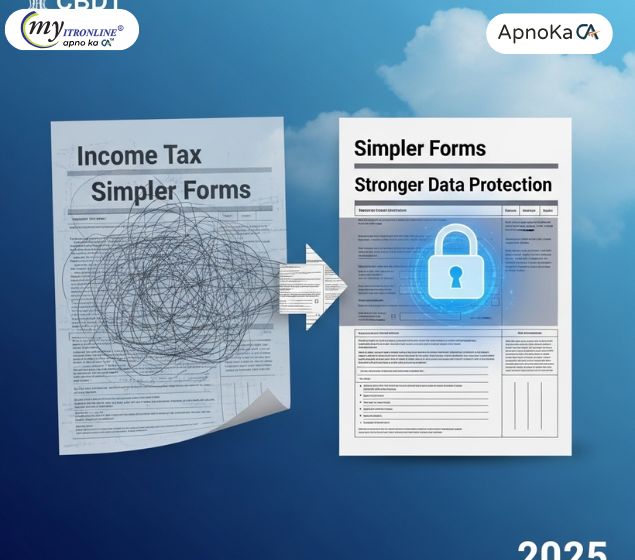# tax2025
7 posts in `tax2025` tag

ITR E-Verification Made Easy: Your 2025 Guide Using Demat or Bank Account
A complete 2025 guide on how to e-verify your Income Tax Return (ITR) quickly and securely using your pre-validated Bank Account or Demat Account on the e-Filing portal. Learn the prerequisites and the step-by-step Electronic Verification Code (EVC) generation process.

CBDT Overhauls Income Tax: Simpler Forms & Stronger Data Protection by 2025
The Central Board of Direct Taxes (CBDT) is implementing significant changes to income tax forms and rules, effective April 2025, following the new Income Tax Act of 2025. The initiative focuses on simplifying tax filing through smart, pre-filled forms, drastically reducing the number of forms from 200 to under 100, and ensuring robust protection for digital data collected during tax procedures. While new ITR forms are slated for 2027, immediate efforts are on TDS, TCS, advance tax, and exemption forms. These reforms aim to enhance transparency, ease compliance, and create a smarter, safer tax environment for Indian taxpayers.

Complete Guide to ITR-7 Form (AY 2025-26): Utility, Schema & Validation
The Income Tax Department has released the ITR-7 Form for AY 2025-26, applicable to persons and institutions required to file returns under sections 139(4A), 139(4B), 139(4C), and 139(4D). This blog covers the newly released Excel-based utility, JSON schema, and validation guidelines to simplify your tax filing process.

Short-Term Capital Gains Tax Explained (India 2025): 15% vs Slab Rate
This post explains Short-Term Capital Gains (STCG) tax in India for 2025 (FY 2024-25 & 2025-26). It defines capital assets, details holding periods for STCG classification (e.g., <=12 months for listed equity, <=24 months for property, <=36 months for others), explains STCG calculation, outlines tax rates (15% under Sec 111A for STT-paid equity/EOF vs. slab rates for other assets), and covers loss set-off/carry forward rules and ITR reporting.
.jpg)
In order to draft new rules and forms for the 2025 income tax bill, CBDT is seeking input from stakeholders.
The CBDT is seeking stakeholder input as it drafts new Income Tax Rules and Forms for the Income Tax Bill, 2025. This blog discusses the relevance of the consultation, main emphasis areas, and how stakeholders may help build a more efficient tax system.
.jpg)
India’s Income Tax Slabs for FY 2023-24, 2024-25, and 2025-26 – New Tax Regime
An outline of the most recent income tax slabs for FY 2023–2024; FY 2024–2025; and FY 2025–2026 under the new tax system is given in this blog. Taxpayers need to carefully consider their alternatives in light of the updated tax rates and higher exemption ceilings. Myitronline makes tax preparation easier while guaranteeing accuracy and the most possible savings.
.jpg)
An in-depth analysis of the revised TDS rates for AY 2025–2026
This blog offers a thorough analysis of the revised Tax Deducted at Source (TDS) rates for the Assessment Year (AY) 2025–2026, emphasizing the main changes and how they affect enterprises, professionals, and salaried persons. Changes in TDS rates for a range of payments, including dividends, interest on stocks, professional fees, and cryptocurrency transactions, are highlighted in the article. It also discusses the implementation of new sections, such as Section 206AB for non-filers of income tax returns (ITR) and Section 194S for cryptocurrency transactions. The blog also covers significant changes, such as lower TDS rates for new businesses and modifications to cash withdrawal limits. The article highlights the significance of compliance and offers advice on how people and companies may guarantee correct TDS deduction in order to avoid fines.
